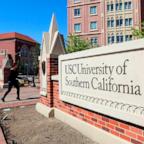Hawaii grapples with Great Depression-level unemployment as tourism plummets
One town has 35% unemployment, higher than the peak of the Great Depression.
Peter Yee has been furloughed from his job at a rental car company since late March, and now says he spends up to 12 hours a day, seven days a week answering questions and sharing advice in the Facebook group, "Hawaii Unemployment Updates and Support Group."
In just a matter of weeks, the coronavirus pandemic has ravaged the economy of the picturesque town of Kahului on the island of Maui where Yee lives.
"Driving through the main little areas was like a ghost town," Yee told ABC News.
The unemployment rate in Kahului skyrocketed to 35% in April -- nearly 10% higher than the national unemployment rate at the peak of the Great Depression -- and the highest of any metropolitan area in the U.S., according to the latest data available from the Bureau of Labor Statistics.
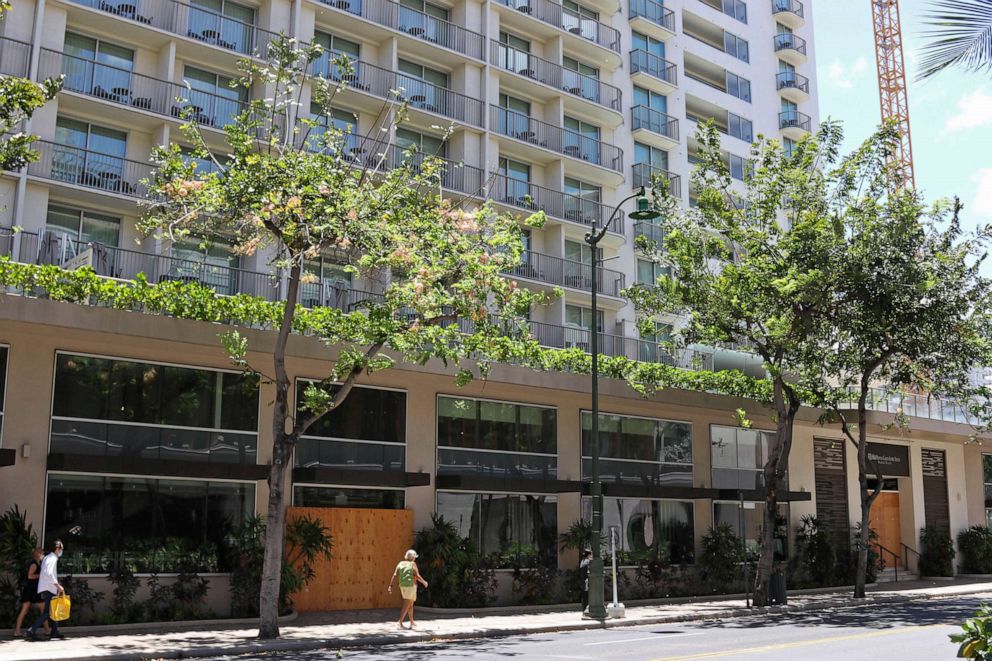
As COVID-19 decimated tourism and the planes stopped coming in, job losses on the island piled up with unprecedented furor. In March, Kahului had some of the lowest unemployment rates in the nation at 2.2%.
In an effort to contain the spread of COVID-19 on the islands, Hawaii’s government acted fast -- imposing a mandatory 14-day quarantine for all visitors. While the move was lauded by many and proved effective in preventing major outbreaks of the respiratory disease on the islands, the impact to tourism, Hawaii’s biggest industry, proved quick and severe.
"I knew that was a kiss of death," Yee said of the quarantine. "I'm not saying I'm against it, but I knew that there would be virtually zero visitors and zero business for my industry."
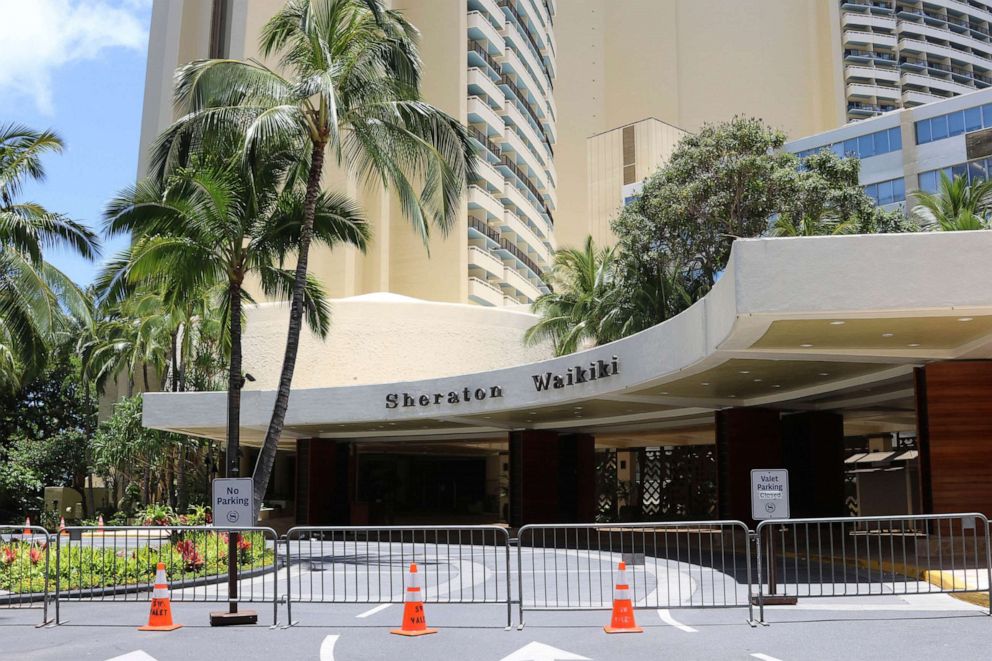
'You go from 30,000 airline passengers per day to a few hundred'
Carl Bonham, the executive director and a professor at the Economic Research Organization at University of Hawaii, told ABC News that the most recent data puts Hawaii's unemployment rate at 22.3% in April, but because these surveys were conducted early that month before many of the job losses, some economists estimate it's 30% or more.
"The range of unemployment estimates will vary dramatically," Bonham said. "The bottom line is it’s bad, a lot of the data is problematic right now because of sort of changes in what it means to be in the labor force."
The closest comparison in living memory is after 9/11 when air travel took a major hit, according to Bonham, but he said "this is completely different."
"After 9/11 there were literally zero planes in the air," he said. "That was a very different situation in that we had a shutdown of tourism for a short period of time, but we didn’t shut down the rest of the economy."
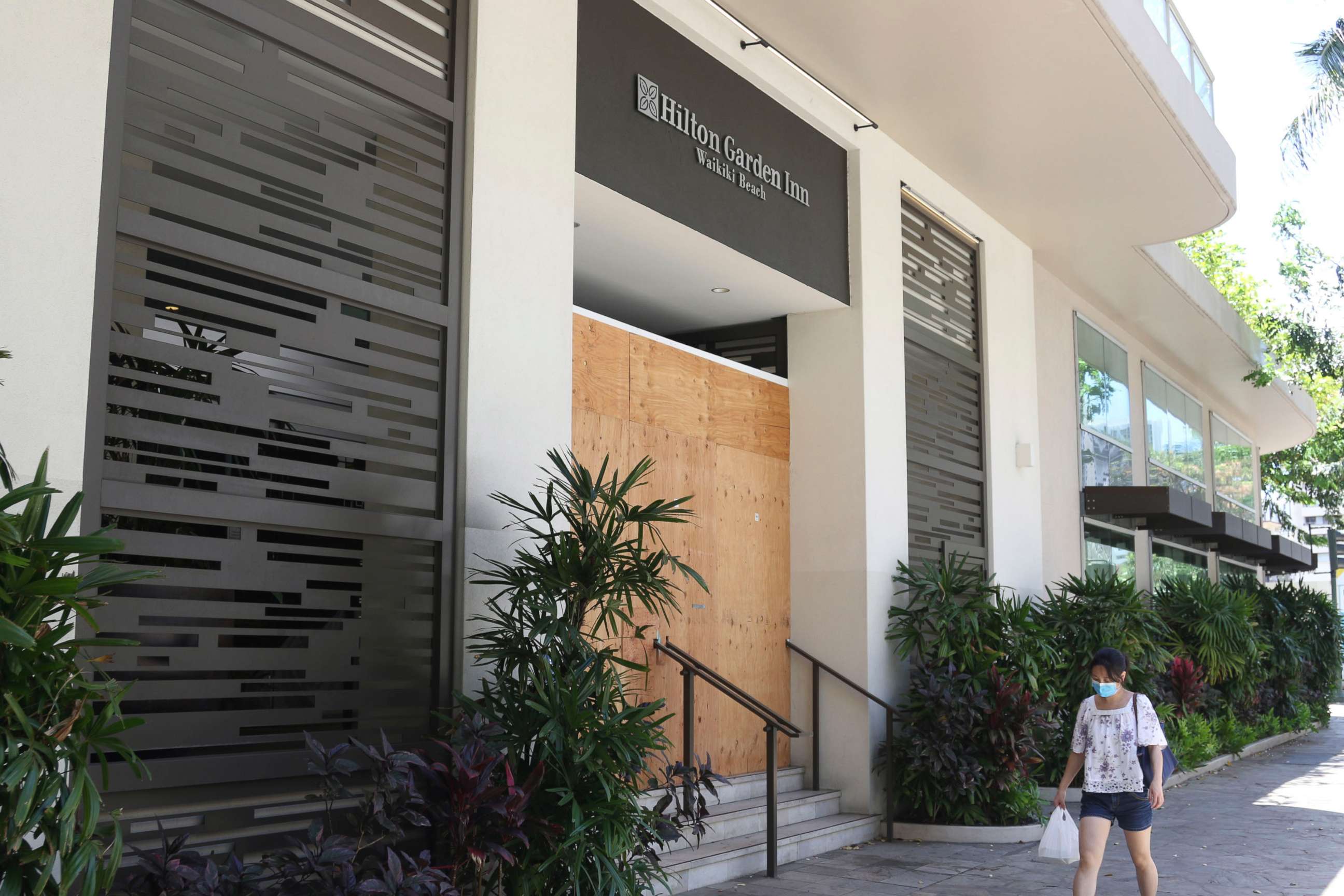
Roughly 25% of the jobs in Hawaii are connected to tourism, which has almost entirely vanished, according to Bonham.
"Because we rely completely on air travel, when you shut down tourism with a 14-day quarantine and you go from 30,000 airline passengers per day to a few hundred, that’s a very different situation from a place that may still be getting some visitors by car,” he said.
The community of Kahului saw the largest over-the-year unemployment rate increase in April, shooting up more 32.5% points, according to the BLS’s most recent data. As the travel industry was hit hard by the pandemic, fellow tourist hubs Las Vegas, Nevada, and Atlantic City, New Jersey, saw the second and third highest increases in over-the-year unemployment rates.
Bonham said due to high cost of living and a lack of jobs, they are forecasting an exodus from Hawaii within the next few years.
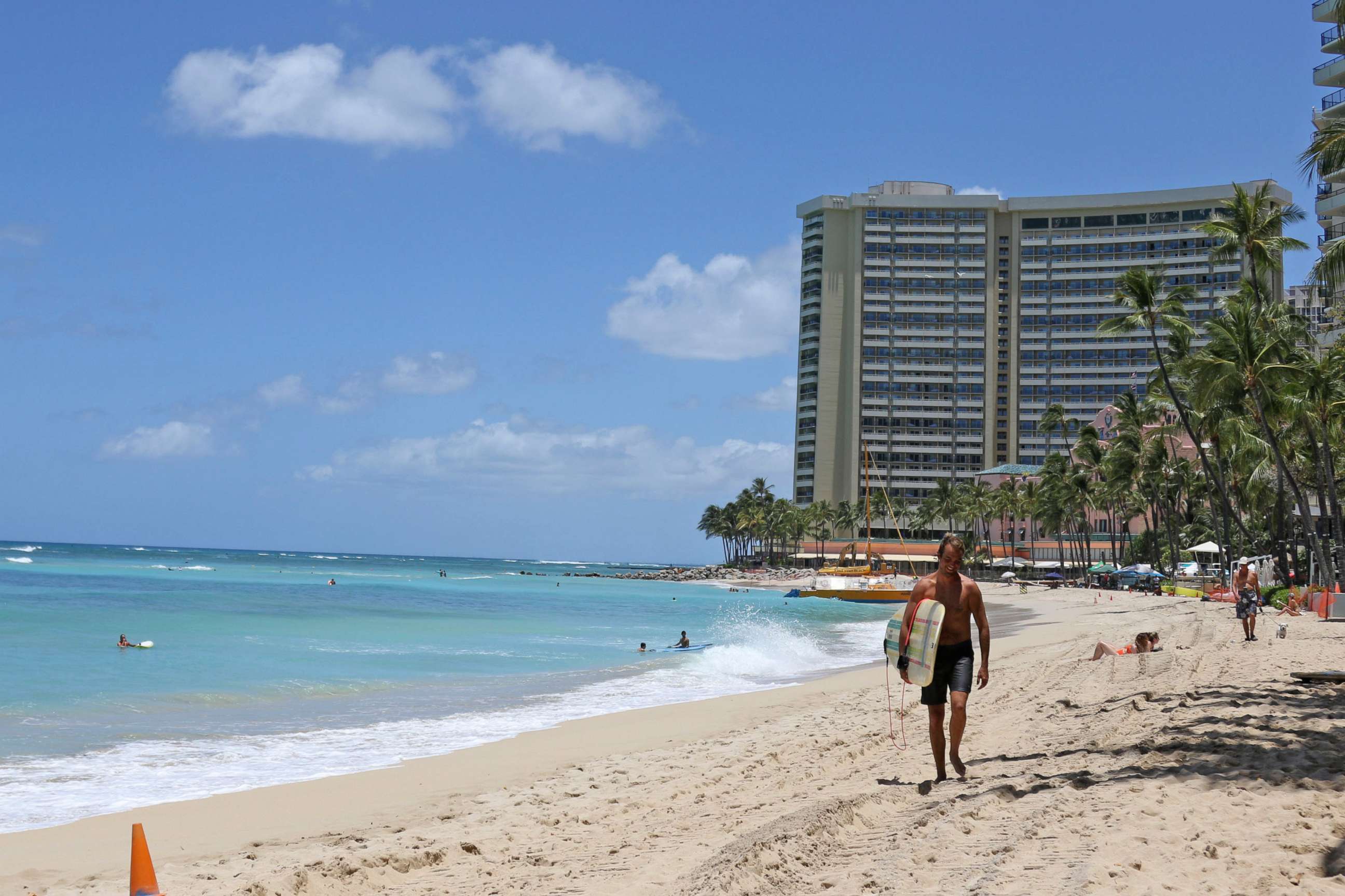
An unemployment 'nightmare'
Yee said he first joined the Facebook unemployment support group in early April when there were around 800 members, but said, "we accumulated 10,000 more members in 30 days."
It now has more than 14,000 members, all of whom have been vetted by admins to make sure they aren't scammers.
As a moderator, Yee said he is in the group every day trying to help people who post questions or share their stories -- many of which highlight dire realities of what Great Depression-era unemployment in America looks like.
"What else was I going to do during lockdown?" Yee said. "I was helping out every day, seven days a week, eight to 15 hours a day, and I still do that."
He said he constantly replies to people reminding them of a temporary eviction moratorium, what food stamp programs are available, and mostly serving as a source of support as frustration and anger mounts towards the state’s unemployment insurance program.
Many members in the Facebook group say they have waited over six weeks to receive any benefits at all, according to Yee.
In the first week of June, the state's Department of Labor announced the sudden leave of its director, Scott Murakami. His office, which did not respond to ABC News' interview requests, said he and other workers had been receiving death threats.
Yee said it took more than four weeks between the time he submitted his unemployment claim to the time he received any unemployment insurance from the state.
Simon Kaufman, a stand-up comedian and radio DJ from Hilo, Hawaii, said he waited nine weeks before he saw any money after filing his unemployment claim.
Moreover, he said they didn’t calculate a majority of his income into his check, instead basing it off of a part-time holiday job he had waiting tables.
"I don’t know what’s going on," he said. "I’m not a waiter, they’re paying me on the side gig I did."
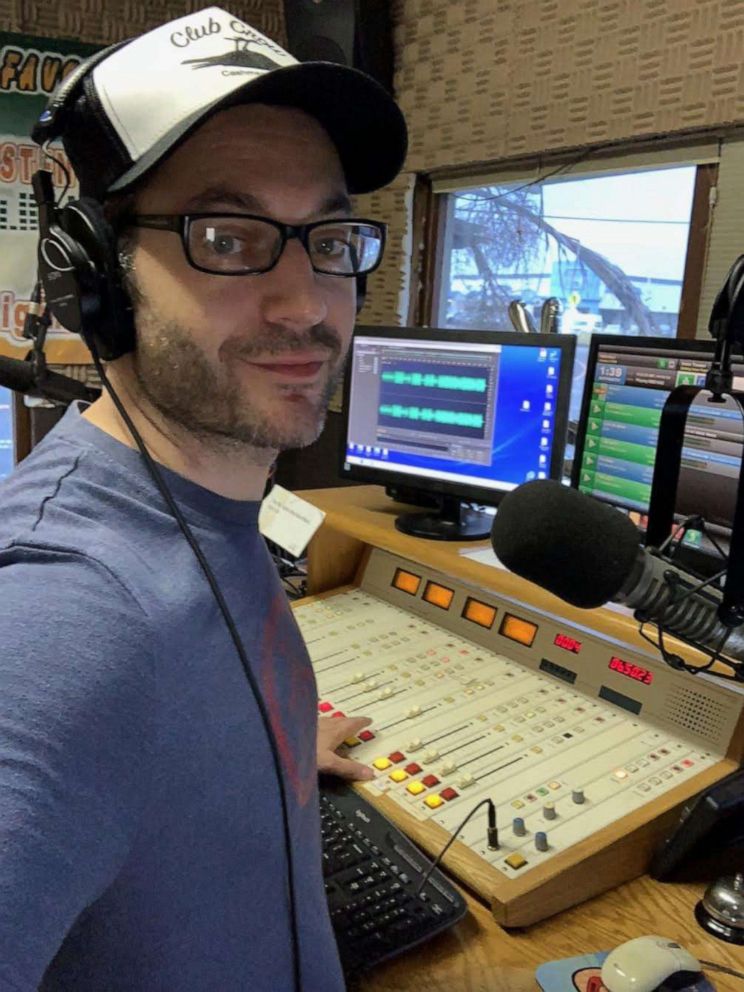
Kaufman said he has been surviving on savings and even tried "intermittent fasting."
Phone lines to the state’s unemployment insurance office have been almost entirely clogged up since the last week of March, Yee and Kaufman said.
"I've only gotten through once, since March," Yee said, calling the situation a "nightmare."
"If you've got no money for six, eight weeks living paycheck to paycheck, it would be a good assumption to say that half those claimants are in a very dire situation," he said. "But I knew that at that point six, eight weeks, it would be food lines, which came actually earlier."
The Hawaii Department of Labor and Industrial Relations announced earlier this week -- nearly three months into the crisis -- that it has finally made it through a majority of the claims.
"Eighty-eight percent (88%) of the valid unemployment insurance claims that have come in since the beginning of the COVID-19 shutdown have been processed and paid out by the DLIR," the department's deputy director Anne Perreira-Eustaquio, said in a statement on June 10. "We sincerely appreciate people’s patience and wanted the public to know the scope of the remaining issues as well as the scope of the incredible progress made."
Hawaii Gov. David Ige's office did not immediately respond to ABC News' request for comment Friday.
Despite the dire economic situation, Bonham told ABC News that Hawaii's actions in response to the health crisis have been notably effective.
"We’re probably the safest state in the country right now in terms of health outcomes and controlling the virus," he said.
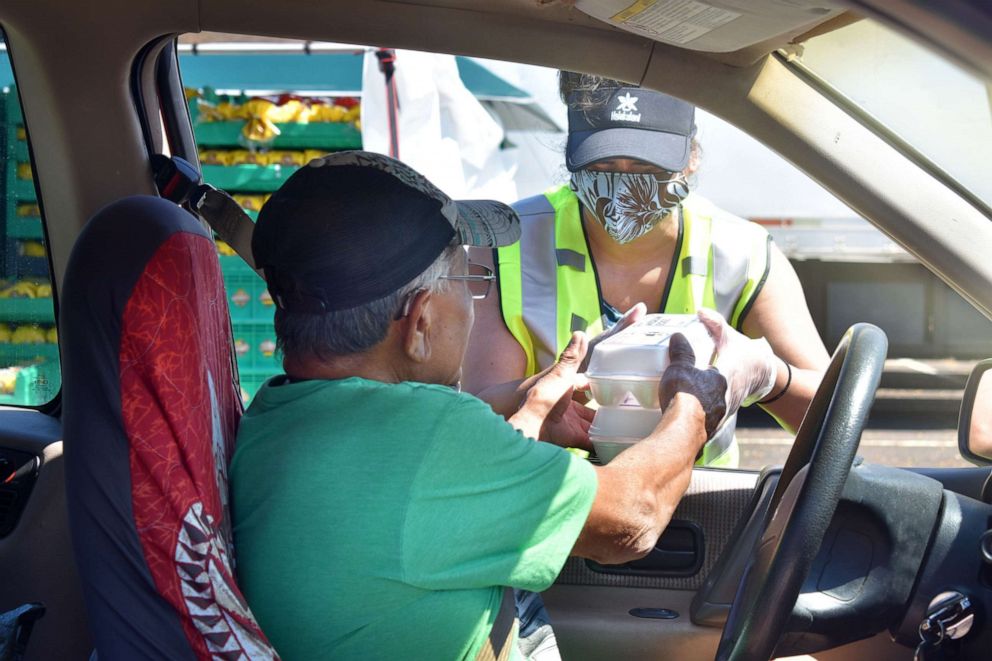
'Something we've never seen in Hawaii, ever': Up to 4-hour lines at food banks
Ron Mizutani, the president and CEO of the Hawaii Foodbank, told ABC News there has been a 260% increase in the amount of food the nonprofit distributed in the month of May compared to the same month last year.
"This unprecedented to say the least,” Mizutani told ABC News. “We always see the face of hungry during crises, during hurricanes, tsunamis, during the government shutdown, but this is something we’ve never seen in Hawaii ever.”
“We have also had some serious issues with unemployment checks being distributed so that’s contributed to needs in a way that we haven’t anticipated,” he added.
Mizutani said according to their simple questionnaires, 80% of families who came to pick up food during the month of May say they have had somebody in their household furloughed or unemployed because of COVID-19, but only 5% have said they were receiving government assistance.
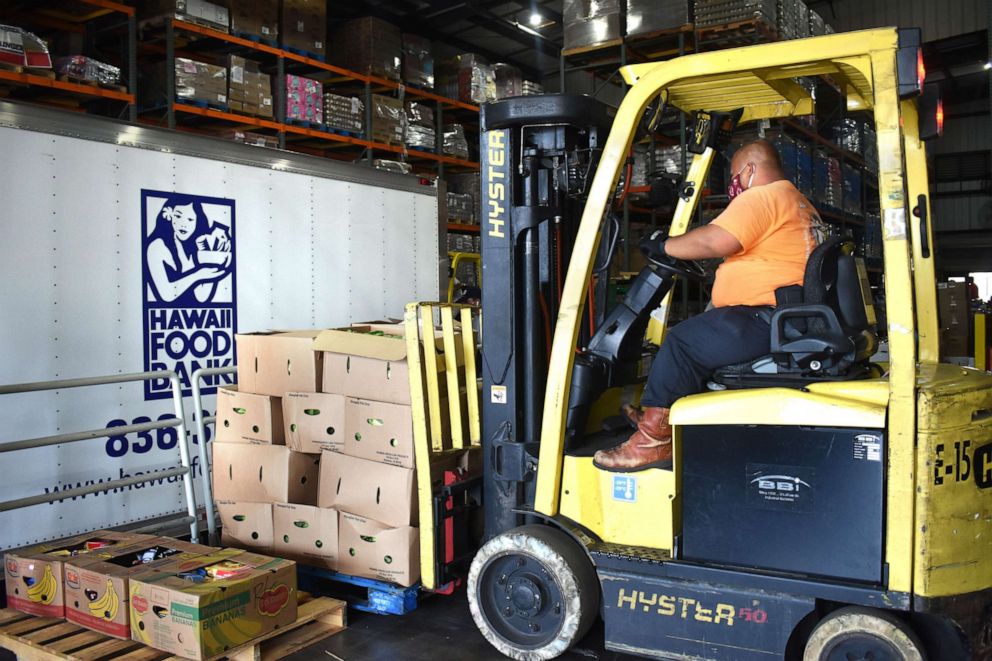
"They are willing to stand in line in their vehicles for three to four hours to receive much-needed food," he said, saying lines have been as long as 4,000 people.
Prior to the pandemic, Mizutani said they usually distributed 800,000 to 1 million pounds of food to those in need each month. In May, he said they distributed more than 3.75 million pounds of food.
"You don’t budget for that, nor can you anticipate those kinds of needs," he said.
"We survive on donations," he added. "Donations have also come to a screeching halt."
Mizutani said he is worried about how they will be able to keep up with the demand, which he expects to continue for months into the future.
"It takes a long time for food to get here to the island and we like other food banks are standing in line with the rest of the country," he said. "We made orders two weeks ago that won’t arrive until August, September, that’s the kind of wait time that we have before we receive food from mainland distributors."
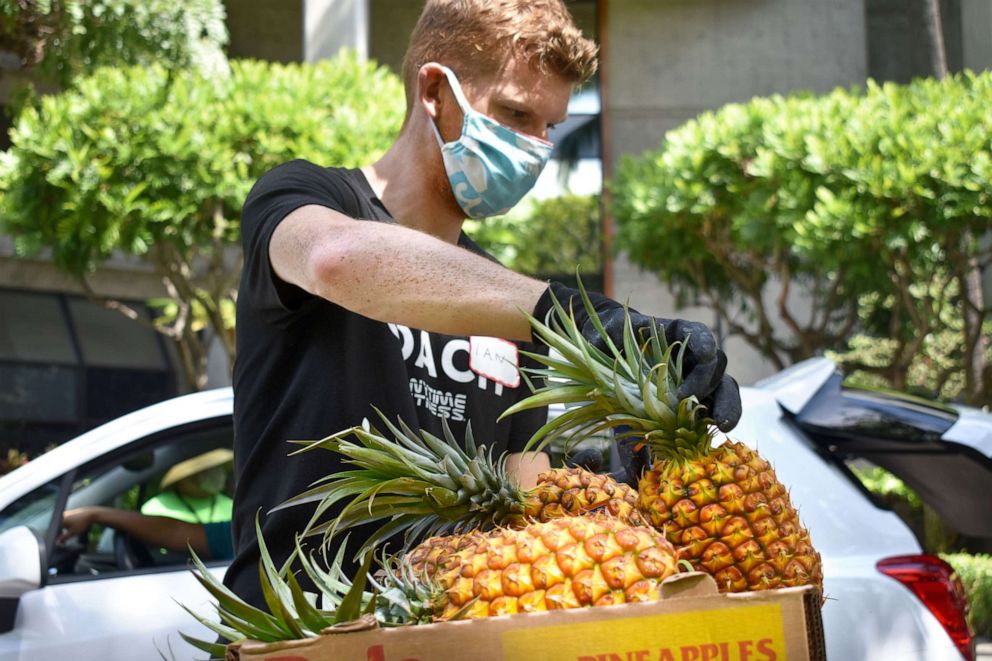
A self-described "local boy," Mizutani said he has deep respect for those who come to receive food.
"They’re not quick to raise their hand when it comes to hunger," he said of many in his community. "It takes courage to wait in line for hours for something they would never thought they would have to do."
While empty beaches and recovering coral reefs have been a bright spot for some locals, Mizutani said "we need people back badly."
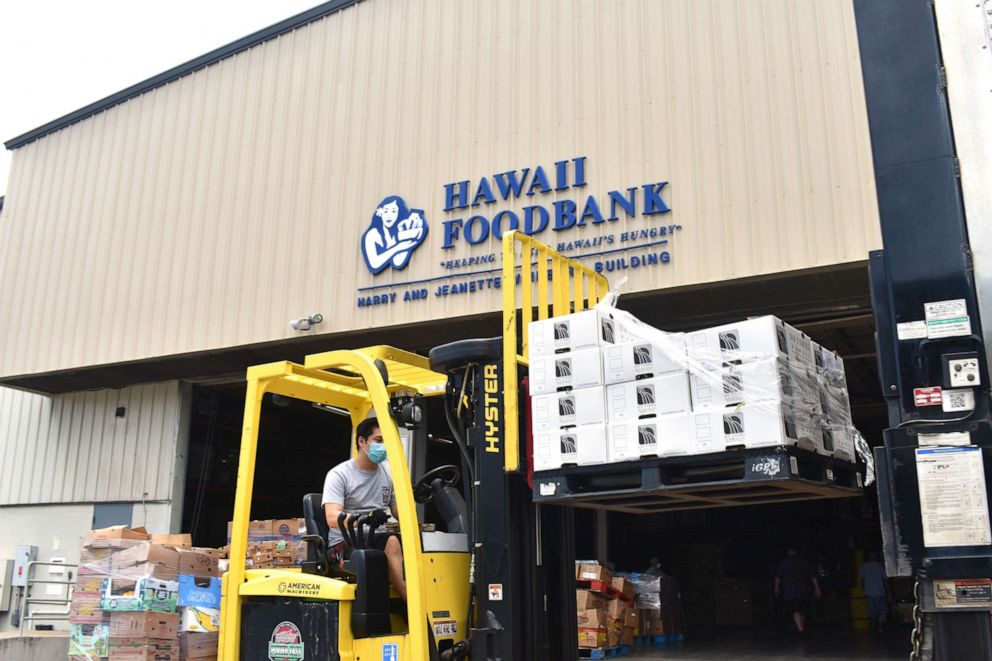
"This is not normal, I don’t like to use the word the 'new normal' because there is nothing normal about this at all," he said. "We live in a very special place here and while a lot of families are hurting, we are seeing a lot of our Aloha spirit."
"The world was not prepared for COVID-19, but I truly believe that COVID-19 was not prepared for Hawaii and our spirit," he added. "We are a resilient state and we are rising."



